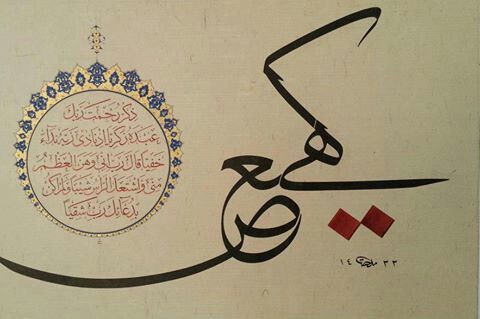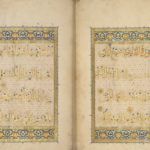
2. The inexplicability of the Qur'an The legitimacy of religious authority rests on the claim that it is capable of interpreting ‘God's word’. However, it often – or always – goes a step further claiming that it is not only capable, but also the only ones capable of interpreting ‘the word of God."’ By taking this step religious authority becomes religious domination, and indeed a priesthood, a tyranny, a power in itself.
BY SAID NACHID
RELIGIOUS AUTHORITY and religious authoritarianism shares a common premise: the hypothesis that the interpretation of ‘the words of God’ can be made, but only by a choice few. By this logic, religious knowledge becomes transformed into a religious authority, and indeed into a social, moral and political authority, one that is exercised over the many by the few.
By understanding this logic, we can free ourselves from the illusions of religious authority practiced, or attempted, by some institutions, universities, satellite channels or state authorities in the Islamic world. We have only two options here: either we take the ẓāhirī [1] approach to its fullest extent and decide that the word of God is clear and simple, and its understanding easy for everyone without exception, without the need for agents to explain it and interpret it; or we go with the esoteric approach and take this to its extreme, and declare that any interpretation is impossible, that the word of God cannot be understood, and no-one – imam, scholar, preacher, priest, or whoever he may be – can comprehend its meaning and convey its content.
The first option may seem tempting, since it allows everyone, on an equal footing, to understand and embrace ‘the word of God’ without the need for any interpretive reference or authority imposing restrictions set by some minds upon all others. But the persuasive potential of this option comes up against two obstacles: the first obstacle is related to the apparent flimsiness of many Qur’anic verses when taken in their ‘apparent’ meaning, such as the verses on God’s mounting the Throne,[2] as an example. The second concerns the high level of ambiguity that surrounds many Qur’ānic expressions, whether due to the linguistic origins of some of the words, or due to the workings of metaphor and simile in a number of Qur’ānic verses.
No authority, and no one person can claim an ability to comprehend the meanings of the Noble Qur’ān
In any case, the ẓāhirī choice for interpretation has been repeatedly attempted throughout the course of Islamic culture, and yet this did not prevent a group of people claiming to have the correct understanding of the text whenever it turned out that other people differed in their interpretation.
As for the second option – the Qur’ān’s imperviousness to any human interpretation – we are here faced with a hypothesis that may seem new, but it is in fact based on an old, almost forgotten impulse.
No authority, and no one person can claim an ability to comprehend the meanings of the Noble Qur’ān, something which is confirmed by the verse “none knows its interpretation except Allah”.[3] Why? Because the Qur’ān is only an approximate or ‘overview’ interpretation of the mysterious emanation references to the Divine Being. The ‘emanation’ here is not in the wording, as the jurists thought or as the scholastics believed, but rather in its constituting a ‘unfolding’ of something, nothing more. Hence, the Revelation was termed a revelation.
Doubtless the vague, ambiguous letters that initiate twenty-nine or so sūras of the Qur’ān point to an insistence on ambiguity and an abstaining from interpretation. Examples of this are:
ألم (Alif Lām Mīm) which appears at the beginning of six sūras (Al-Baqara, Āl-‘Imrān, Al-‘Ankabūt, Al-Rūm, Luqmān, Al-Sajda);
حم (Ḥā Mīm) which occurs at the beginning of six sūras (Al-Ghafir, Fuṣṣilat, Al-Zukhruf, Al-Dukhān, Al-Jāthiya, Al-Ahqāf);
ألر (Alif Lām Rā’) which appears at the beginning of five sūras (Yūnus, Hūd, Yūsuf, Ibrāhīm, Al-Hijr).
And there are more mysterious and ‘talismanic’ letters than these. Examples are:
حمعسق (Ḥā Mīm ‘Ayn Sīn Qāf) which appears at the beginning of sūrat al-Shūrā
كيهعص (Kāf Yā’ Hā ‘Ayn Ṣād) which appears at the beginning of sūrat Maryam. –
طسم (Ṭā Sīn Mīm) which appear at the beginning of sūrat Al-Qaṣaṣ.
Since all of the ancient interpreters had different views about their connotations and meanings, they were humbled by their intrinsic vagueness and obscurity. Did those letters refer to some of the letters of the names of God? Were they supplications? Or were they some scattered letters of the divine oath? Or was it one of the other interpretations attempted. Whatever the case, all this does not negate its ‘talismanic’ character. It perhaps calls to mind traditions of Jewish mysticism in its dealings with the Hebrew alphabet.

Suggested Reading
But what is certain is that the insistence by some on interpreting them led to what is termed gharā’ib al-tafsīr (‘strange interpretation’):
Thus, concerning حمعسق (Ḥā Mīm ‘Ayn Sīn Qāf) there are those maintain that Ḥā stands for the ḥarb (war) between ‘Alī and al-Muʽāwiya, the Mīm refers to the Marwānid rule, the ‘Ayn is the ‘Abbāsid state, the Sīn is the Sufyanid rule, and the Qāf is the qudwa (‘role model’) that guides.
This was narrated by Abū Muslim, who then went on to say: “what I meant by this is that one should know that some of those who claim such knowledge are fools.” Similarly there are those who say that regarding ألم (Alif Lām Mīm) that the Alif signifies the ilf (close companion) of Allah, that is, Muḥammad and his mission as His Prophet; the Lām denotes how they lāmah (‘refused him’) and rejected him: and the Mīm signifies the mūm – which means ‘pleurisy’ – that afflicted those deniers and rejecters.[4]
And if the interpretation here is a kind of absurdity, then it is similarly absurd to seek rulings one can draw from those opaque words or verses, if we are to consider that the Qur’ān equates to a political constitution, as the theorists of a Qur’ānic constitution maintain.
But more plausibly, can we ask whether those words were intended to create a sense of ambiguity? Are those words not the fruit of the mystical, gnostic and esoteric mystery that the Messenger grasped in his connection with the stages of the divine emanation? Doesn’t the mystery itself have a devotional function? Does the Qur’ān have any greater function than the function of worship, something far removed from all forms of political and ideological exploitation?
[1] The ẓāhirī approach to the Qur’ān was a strictly literalist approach that rejected going beyond the ‘outward’ (ẓāhir) understanding of the sacred Texts and repudiated analogical deduction (qiyās). On this debate, see the Almuslih Model Curriculum [C] Courses – Revisiting the Legal Heritage, section C2.2.4 – ‘The categorisation of authority beyond scripture: qiyās‘. (Ed.)
[2] There are several verses in the Qur’ān that indicate what some have taken to be an actual place and an actual physical act of God, such as at Qur’ān VII (al-A’rāf), 54: ثُمَّ اسْتَوَىٰ عَلَى الْعَرْشِ then mounted He the Throne. However this understanding is disputed by others who interpret the verb اسْتَوَىٰ istawā (‘mounted’) to indicate a metaphorical ‘highness’ and elevation from all physical realms. (Ed.)
[3] Qur’ān III (Āl ‘Imrān), 7: He it is Who has revealed the Book to you; some of its verses are decisive, they are the basis of the Book, and others are allegorical; then as for those in whose hearts there is perversity they follow the part of it which is allegorical, seeking to mislead and seeking to give it (their own) interpretation. but none knows its interpretation except Allah.
[4] Jalāl al-Dīn al-Suyūṭī الإتقان في علوم القرآن (‘Perfection in the Sciences of the Qur’ān’), edited by Saeed al-Mandoub, Dar al-Fikr, Lebanon, first edition, 1996, part: 1, p. 491 (section 6368). For an English translation of excerpts from this interesting work, see a downloadable PDF here in the Almuslih Library. (Ed.)
Main image: The ambiguous letters كيهعص (Kāf Yā’ Hā ‘Ayn Ṣād) in a calligraphic representation, along with the opening verse of the sūrat Maryam.
